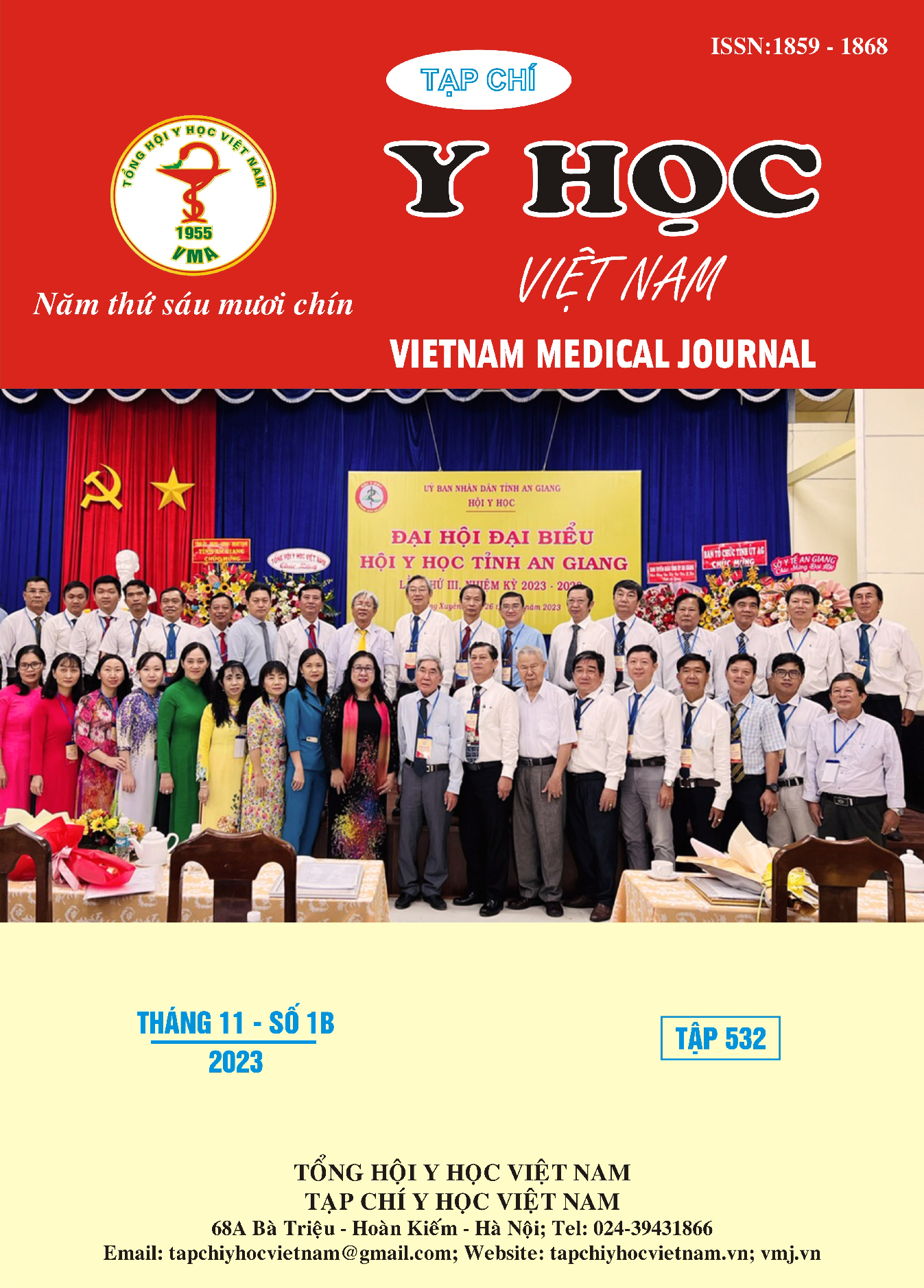CLINICAL AND LABORATORY CHARACTERISTICS AND THE RELATED FACTORS IN PREGNANT WITH SEVERE COVID-19 IN HANOI OBSTETRICS AND GYNECOLOGY HOSPITAL
Main Article Content
Abstract
Subjects: The study included 142 pregnant women with severe COVID-19 treated at Hanoi Obstetrics and Gynecology Hospital, facility 2. Objective: Clinical and paraclinical characteristics and some related factors of pregnant women with severe COVID-19 treated at Hanoi Obstetrics and Gynecology Hospital, facility 2. Research Method: Retrospective study design. Research results: Among 142 pregnant women with severe COVID-19 infection, the average age was 32.26 ± 5.57 years. The group of gestational age from 28-36 weeks admitted to the hospital is the largest, accounting for 53.5%. Most of the young people have not been vaccinated against COVID-19, accounting for 84.5%. The proportion of pregnant women with cough, fever, and difficulty breathing when hospitalized was 34.5%, 47.2%, and 25.4%, respectively. Most pregnant women have very high D-dimer and CRP indexes (> 94.0%). There is an association between nasal congestion and COVID-19 vaccination history; dyspnea and gestational age groups with p < 0.05%. There is a relationship between CRP subclinical symptoms and gestational age at admission, with p < 0.05. Conclusion: Pregnant women infected with severe COVID-19 have the main clinical symptoms: cough, fever, difficulty breathing. CRP and D-dimer values increased significantly in this group of pregnant women and CRP was related to gestational age at admission.
Article Details
Keywords
COVID-19 infection; pregnant women
References
2. Oleksandra Yaroslavivna Pryshliak, Oleksandra Vasulivna Marynchak, Oksana Yevgenivna Kondryn, Ihor Hnatovych Hryzhak, and Natalia Ivanivna Henyk, “Clinical and laboratory characteristics of COVID-19 in pregnant women,” JOURNAL of MEDICINE and LIFE, vol. 16, no. 5, pp. 766–772, 2023, doi: 10.25122/jml-2023-0044.
3. R. A. M. Pierce-Williams et al., “Clinical course of severe and critical coronavirus disease 2019 in hospitalized pregnancies: a United States cohort study,” American Journal of Obstetrics & Gynecology MFM, vol. 2, no. 3, p. 100134, Aug. 2020, doi: 10.1016/j.ajogmf.2020.100134.
4. Trần D. C., Đặng C. V., Lê C. Q., Đặng Q. H., Nguyễn T. T. H., and Nguyễn Q. K., “Đặc điểm lâm sàng, cận lâm sàng thai phụ nhiễm SARS-CoV-2 tại Bệnh viện Phụ sản Trung ương và Bệnh viện Nhiệt đới Trung ương,” TC Phụ sản, vol. 20, no. 3, pp. 36–40, Oct. 2022, doi: 10.46755/vjog.2022.3.1437.
5. Lương Đức Long, Nguyễn Minh Phương, Lê Thị Kim Định, Lê Trần Thanh Thảo, and Hồ Thị Thu Loan, “ĐẶC ĐIỂM LÂM SÀNG, CẬN LÂM SÀNG, MỨC ĐỘ BỆNH VÀ KẾT QUẢ ĐIỀU TRỊ THAI PHỤ MẮC COVID-19 TẠI BỆNH VIỆN PHỤ SẢN THÀNH PHỐ CẦN THƠ,” no. 61, pp. 307–314, Jul. 2023.
6. Nguyễn Thị Hồng, Nguyễn Phương Sinh, Bế Thị Hoa, Cao Thị Quỳnh Anh, and Hoàng Quốc Huy, “ĐẶC ĐIỂM LÂM SÀNG VÀ KẾT QUẢ SẢN KHOA CỦA SẢN PHỤ NHIỄM COVID 19 TẠI TRUNG TÂM HỒI SỨC COVID THÁI NGUYÊN,” Tạp Chí Y học Việt Nam, vol. 528, no. 2, pp. 25–28, 2023, doi: https://doi.org/10.51298/vmj.v528i2.6071.
7. K. S. Hazari et al., “Covid-19 infection in pregnant women in Dubai: a case-control study,” BMC Pregnancy Childbirth, vol. 21, no. 1, p. 658, Dec. 2021, doi: 10.1186/s12884-021-04130-8.


